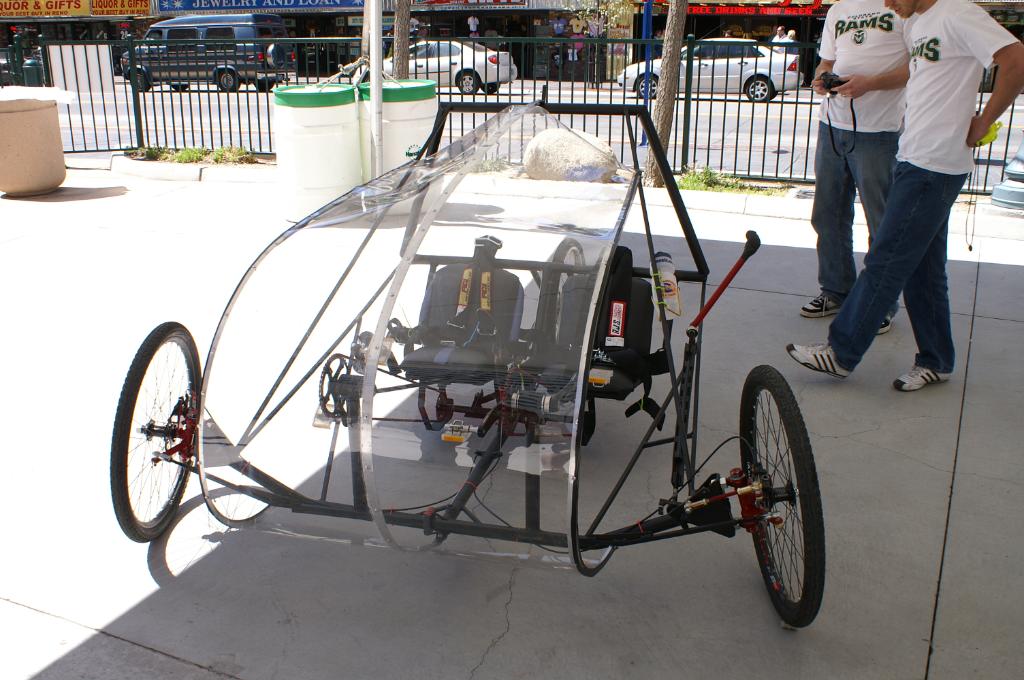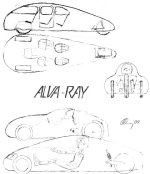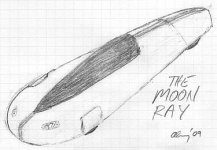todayican2 said:
Lets say, a 1000lb 2 seater with lexan "canopy" good looking in a "im the 2 seat better looking cousin of the sparrow" kind of way 100ah @72v 75mph top speed trike were to hit the market today, fairly well sorted.
What would it fetch for 4 units production a month?
Y'know, I think about that from time to time. There are at least three things to say about it:
1. I think the premise vehicle has problems. 100Ah at 72V times 80% DOD per cycle is under 6kWh. That's a very small pack, about the equivalent of 3/4 gallon of gasoline using the "8kWh of Lithium = 1 Gallon of Gasoline" Rule of Thumb. A 1000lb vehicle won't go more than 30-40 miles on that, at best, I would think. It is possible I'm confused on the math, but my calculations show this is about 170lbs of lithium, which I can tell from that fact alone its a very small pack for a half ton vehicle. It might hit 75mph, but range at that speed could be as little as 15 miles. Anyway, my point is that you'd need more like 400lbs+ of lithium in a 1000lb car to make it go fast enough and far enough to be commercially viable. Say more like 160Ah at 108V. That would give you nearly 14kWh usable, for decent range and performance, but I'm no EE and have no experience with the batteries, so its hard for me to work these numbers off the cuff with confidence.
2. Let's talk about costs. The batteries I'm describing are something like $6500 at today's prices. Another $2000 for a commercial-quality BMS, $3500 for motor, drive, controller and electronics, and $2500-$6500 for the finished rolling chassis, and the car is really no longer commercially viable. Mind you, this is for a good sorted car that I would like to own. Everything could be more, some of it could be less but, $14,500-$18,500 is what I would budget. I don't think that pile of parts could be profitably marketed, sold and supported for less than about double that, call it $25k-$35k. Think my numbers are unrealistic? See what the OEMs are going to do with EVs over the next few years (in the thousands of units annual production game, with all their in-place resources and competitive advantages,) and my numbers actually look way too low.
3. OK, so it could all be done on the cheap with lead-acid batteries, crappy motors & controllers, maybe even kit-style. Just make the components and sell them. Its still going to be close to $10k in parts, so it would have to sell near $20k, and it just wouldn't be a good enough product or doable enough as a project for people to sell 4 units a month. Maybe, but man that is a low number. Suppose you can figure out a way to sell 4 of them (or of anything, really) every month and make $10k gross profit on each one. That's $500,000 a year, and it isn't going to support more than a couple of guys and the owner of the business, so basically you're looking at a very risky, capital-intensive business venture designed to produce, at best, a shoestring operation that won't really make any money.
Anybody who thinks I'm nuts with these numbers and realities, by all means get started and good luck to you. I mean that with all my heart. The world needs you to succeed, too. I will also be the first person in line for a job at such a company, but I just can't afford to own or start one. Yes, I want to change the world of personal and family transportation, and I'm not saying cottage manufacturers aren't cool or the way to do it, but gosh, look at the odds against them. For me, its going to be just a hobby until someone can offer me a job in this (not yet really existent) industry and not just an "opportunity..."
So, a short answer is: If it were me, $35k, but it doesn't matter. If the price is right for the business, 4 units every month will not be an achievable sales target. If the price is right for the market, (like $10k for the Trilectra, for example,) then the company probably isn't viable. Remember, Corbin went under, too, as did HMV, Vanguard, and many others, most of which had relatively sorted designs in true small-volume production for a low enough price to sell more than a handful of units. More than that, I think the "today" part of your question is another hard stop. Gas is cheap and nobody is buying ANYTHING that they don't really need right now. Who really needs an electric motorcycle?
How's that for a rant? Even remotely close to the kind of answer you were looking for?








